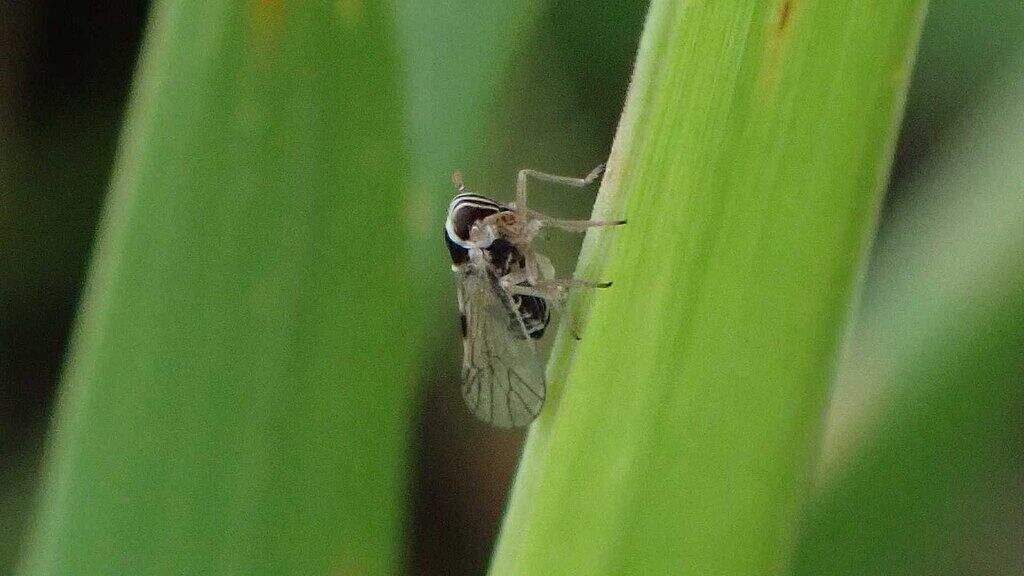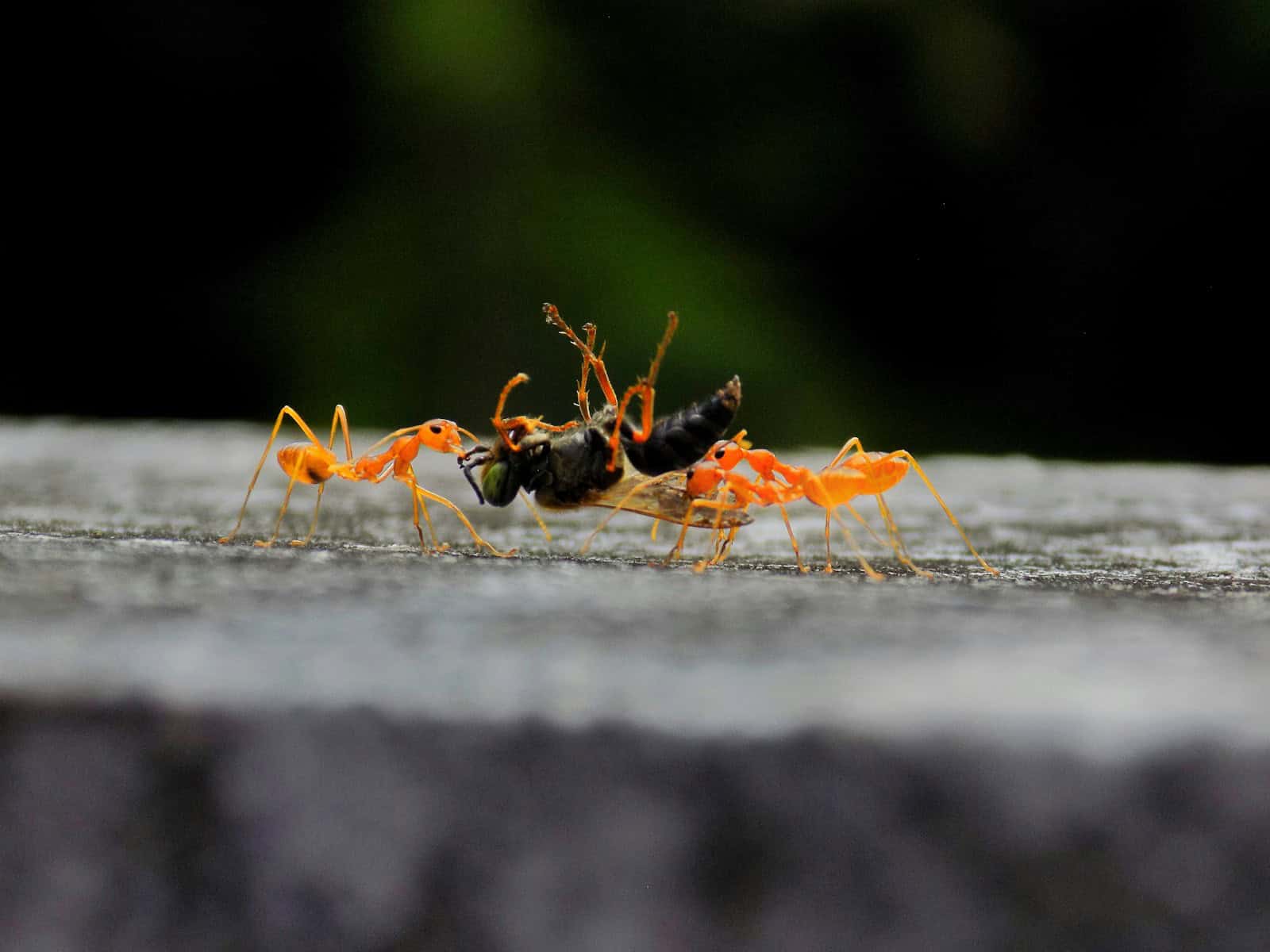Imagine something so tiny, yet so incredibly fast, it could outpace a sprinting human or even a diving falcon—if only its size allowed. Insects, though small, are some of the world’s greatest speedsters. Their miniature bodies hide athletic abilities that defy logic and ignite fascination. The world of fast insects is wild, surprising, and packed with drama. Buckle up as we count down the 13 fastest insects on Earth, revealing the astonishing speeds, surprising facts, and quirky behaviors that make them true champions of the animal kingdom. Whether you’re an animal lover or just love a good race, you’ll be amazed by what these tiny creatures can do!
13. Western Horse Fly

The Western Horse Fly is infamous not only for its painful bite but also for its rapid flight. Reaching speeds up to 22 miles per hour, this insect is a relentless pursuer of mammals, especially horses and cattle. Its large, powerful wings produce a distinct buzzing sound that many find unsettling, but it’s their speed that truly impresses. Horse flies rely on their swift movements to evade swats and to chase down hosts for a blood meal. Interestingly, their eyes have incredible vision, allowing them to track movement from a distance, making escape difficult. Farmers and outdoor enthusiasts alike have learned to respect their speed and agility. Don’t be fooled by its nuisance reputation—this fly is a true speedster.
12. Brown Planthopper

The Brown Planthopper may look unremarkable, but its jumping ability is astonishing. While it doesn’t fly as fast as some others, it can leap at a speed equivalent to a human jumping over a ten-story building in a single bound. This tiny insect, which is a major pest in rice fields, uses its muscular legs to propel itself away from danger in the blink of an eye. Its jumps are so swift and sudden that predators often miss their chance. Scientists have studied the Brown Planthopper’s legs to inspire robotics and biomechanics. While their speed is measured in bursts, they remain one of the fastest jumpers in the bug world.
11. Green Darner Dragonfly

The Green Darner Dragonfly is a dazzling sight, with its bright green body and iridescent wings. This species is known for its long migratory flights, sometimes traveling hundreds of miles. In the air, it can reach speeds of up to 30 miles per hour, making it one of the swiftest dragonflies. Its aerodynamic body and strong muscles allow for agile maneuvers, quick turns, and even hovering in place. The Green Darner’s speed is essential for hunting, as it captures prey mid-flight with incredible precision. Watching one dart across a pond is like seeing a miniature fighter jet in action. Their speed is not just for show—it’s a matter of survival.
10. Australian Tiger Beetle

The Australian Tiger Beetle is a ground-dwelling predator that can run at an astonishing pace. Scientists have recorded it sprinting at over 5.6 miles per hour, which, when adjusted for its body size, makes it one of the fastest creatures on the planet. To put it in perspective, if a human could run this fast relative to their body length, they would break all Olympic records easily. The Tiger Beetle’s speed helps it chase down prey on the hot, sandy soil where it lives. Its long legs and powerful muscles provide the burst it needs to capture insects and escape predators. This beetle’s speed is its greatest weapon, both in offense and defense.
9. Common Housefly

Everyone knows how frustrating it can be to catch a common housefly. These tiny insects have reflexes and flight speed that often outmatch human attempts to swat them. Capable of bursts up to 5 miles per hour, houseflies rely on their rapid wing beats and sharp vision to dodge threats. Their agility is enhanced by their ability to change direction almost instantly, making them masters of evasion. Houseflies use their speed to find food and avoid becoming a meal themselves. Their quick movements have made them subjects of fascination for scientists studying flight dynamics. Next time you try to catch one, remember you’re up against a bona fide speed champion.
8. American Cockroach

Few insects inspire as much dread as the American Cockroach, and part of that fear comes from their startling speed. When startled, these roaches can scurry at over 3.4 miles per hour, which, for their size, is equivalent to a human running over 200 miles per hour. Their long legs and flexible bodies allow them to squeeze through tight spaces at lightning speed. This speed helps them escape predators and quickly find food or shelter. Their ability to sprint across floors, walls, and ceilings makes them especially challenging to catch or control. The American Cockroach’s reputation as a survivor is well-earned, thanks in large part to its rapid movements.
7. Bulldog Ant

Found in Australia, the Bulldog Ant is notorious for its aggression and speed. These ants can run at nearly 1 mile per hour, which might not sound impressive until you consider their tiny size. Their swift movements allow them to hunt, defend their nests, and avoid threats with remarkable efficiency. Bulldog Ants have powerful jaws and venomous stings, and their speed makes them even more formidable. They can traverse challenging terrain, leap over obstacles, and coordinate attacks with fellow ants. Their speed and fearlessness make them one of the most dangerous insects in their environment. It’s no wonder people give them a wide berth.
6. Southern Giant Darner

The Southern Giant Darner is an Australian dragonfly that holds the title for the fastest flying insect in its region. This dragonfly has been clocked at speeds of nearly 36 miles per hour, making it a true aerial ace. Its long, slender body and powerful wings enable it to glide gracefully or zip through the air in pursuit of prey. The Southern Giant Darner is an expert hunter, catching other insects on the wing with amazing precision. Its speed also helps it escape from birds and other predators. Watching one in flight is mesmerizing, as it weaves and darts with unmatched agility.
5. Deer Botfly

If there were an Olympic sprint for insects, the Deer Botfly would be a strong contender. This fly, which parasitizes mammals like deer, has been reported to reach speeds up to 25 miles per hour in short bursts. Its speed is vital for survival, as it must quickly approach a moving host to deposit its eggs. The Deer Botfly’s rapid flight and erratic movements make it difficult for animals to detect or evade. Scientists have marveled at its aerodynamic shape and efficient muscles, which allow for such rapid acceleration. Despite its unappealing lifestyle, the Deer Botfly’s speed is nothing short of remarkable.
4. Sahara Sand Ant

Living in one of the harshest environments on Earth, the Sahara Sand Ant has evolved to be incredibly quick. It can sprint at speeds of nearly 1 meter per second, which is mind-blowing for an insect of its size. This speed allows it to cross scorching desert sands quickly, avoiding predators and the deadly heat. The Sand Ant’s long legs and light body help it stay cool and mobile. Scientists believe its rapid movement is a key reason for its survival in such a challenging habitat. Watching a Sahara Sand Ant dash across the sand is like witnessing a tiny miracle of adaptation.
3. Horsefly

The Horsefly is more than just a summertime nuisance; it’s one of the fastest flying insects in the world. With speeds reaching up to 90 miles per hour in laboratory conditions, the Horsefly is an aerial powerhouse. Its rapid flight allows it to escape swats, pursue hosts, and cover large distances in search of food. The Horsefly’s large compound eyes give it a wide field of vision, making it difficult to surprise or catch. Its muscular body and strong wings are engineered for speed and endurance. The next time you deal with a Horsefly, remember you’re up against a record-breaker.
2. Dragonfly

Dragonflies are legendary for their speed and agility. Some species can reach flying speeds of up to 60 miles per hour, making them the fastest insects on the wing. Their long, narrow wings and lightweight bodies allow for acrobatic maneuvers, including hovering, backward flight, and sudden turns. Dragonflies are also expert hunters, snatching prey mid-air with incredible accuracy. Their eyes are among the most advanced in the insect world, giving them nearly 360-degree vision. Watching a dragonfly zip across a pond is a mesmerizing sight, a true testament to nature’s engineering.
1. Australian Tiger Beetle

At the very top of our list is the astonishing Australian Tiger Beetle. This beetle is the undisputed sprinting champion of the insect world, able to run at speeds that, relative to its body length, far surpass any other creature on land. It can cover more than 2.5 meters per second, which, if scaled up to human size, would be the equivalent of running over 400 miles per hour. Its powerful legs and streamlined body allow for explosive acceleration, making it both a fierce predator and a difficult target. The Australian Tiger Beetle’s speed is so extreme that it often outruns its own vision and must stop to reorient. It’s an incredible example of how evolution has pushed the limits of what’s possible, even for the tiniest animals.
Conclusion

Speed in the insect world is as much about survival as it is about spectacle. Whether darting through the air, sprinting across the ground, or leaping away from predators, these 13 insects have mastered the art of moving fast in their own unique ways. Their stories are a reminder that even the smallest creatures can achieve extraordinary feats, leaving us in awe of nature’s hidden wonders.
- 15 Wild Predators That Hunt at Night - August 14, 2025
- 12 Wild Creatures That Live Their Entire Lives Underground - August 14, 2025
- 12 Deadliest Spiders You Might Find in Your Backyard - August 14, 2025

